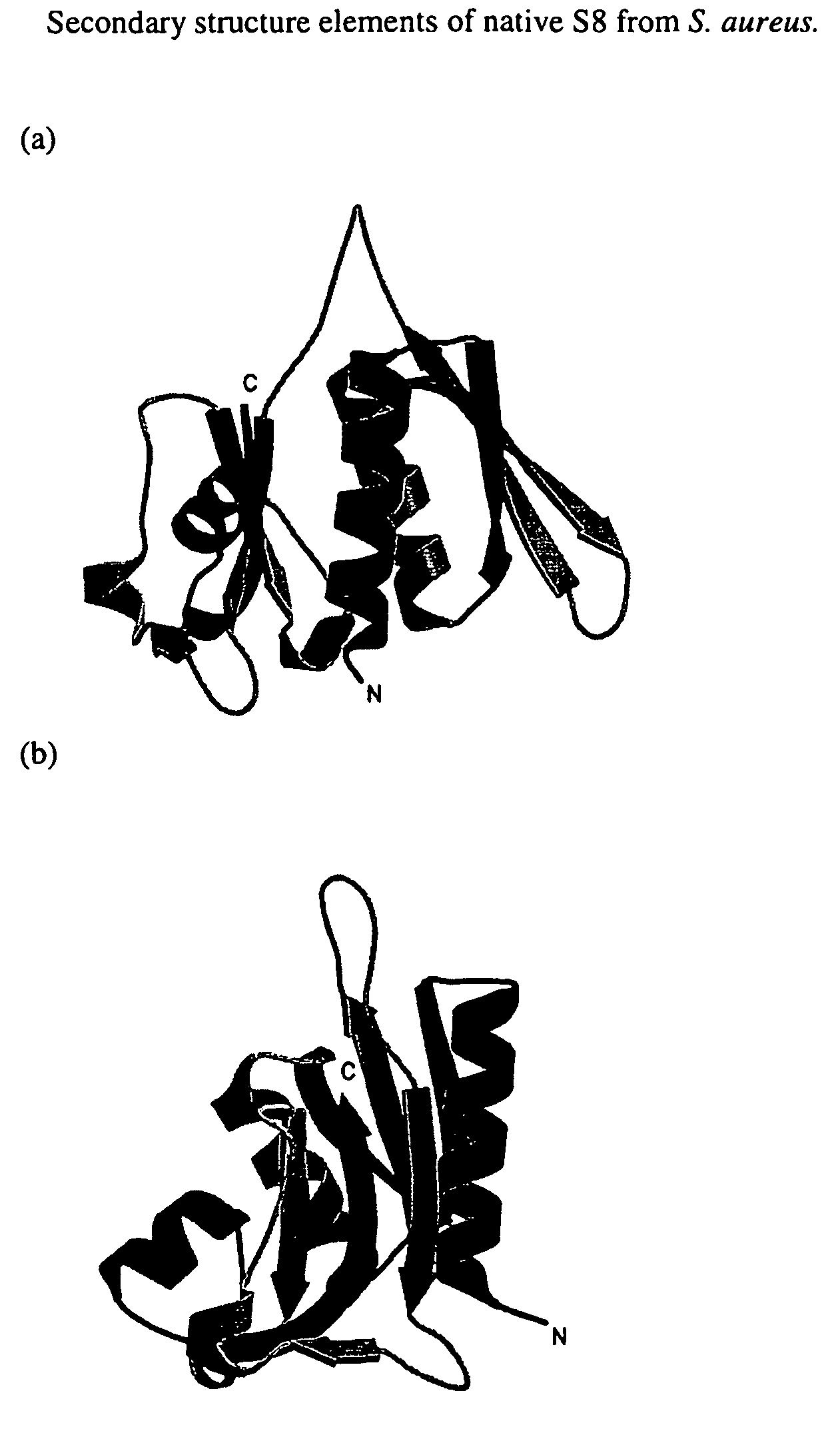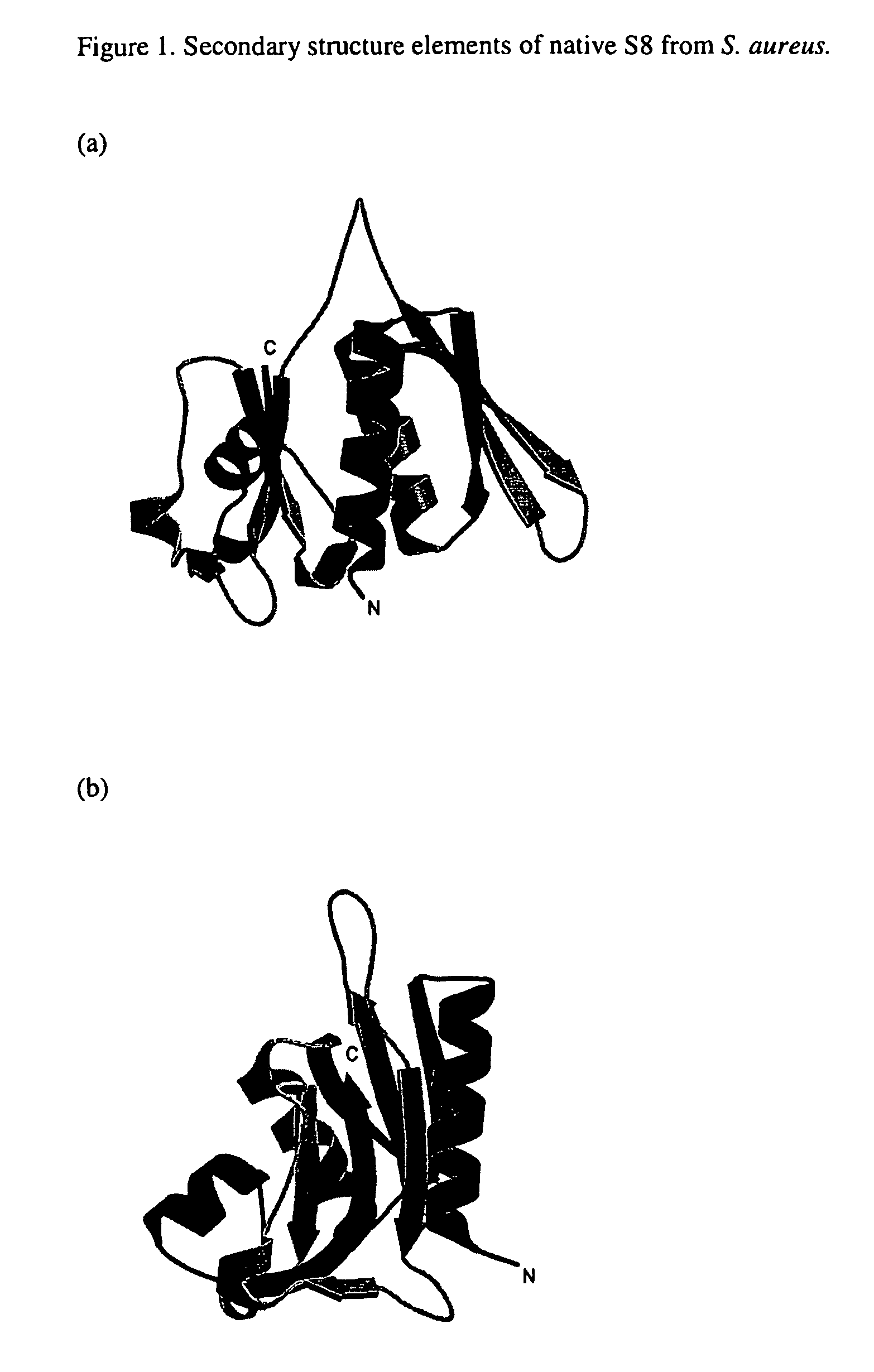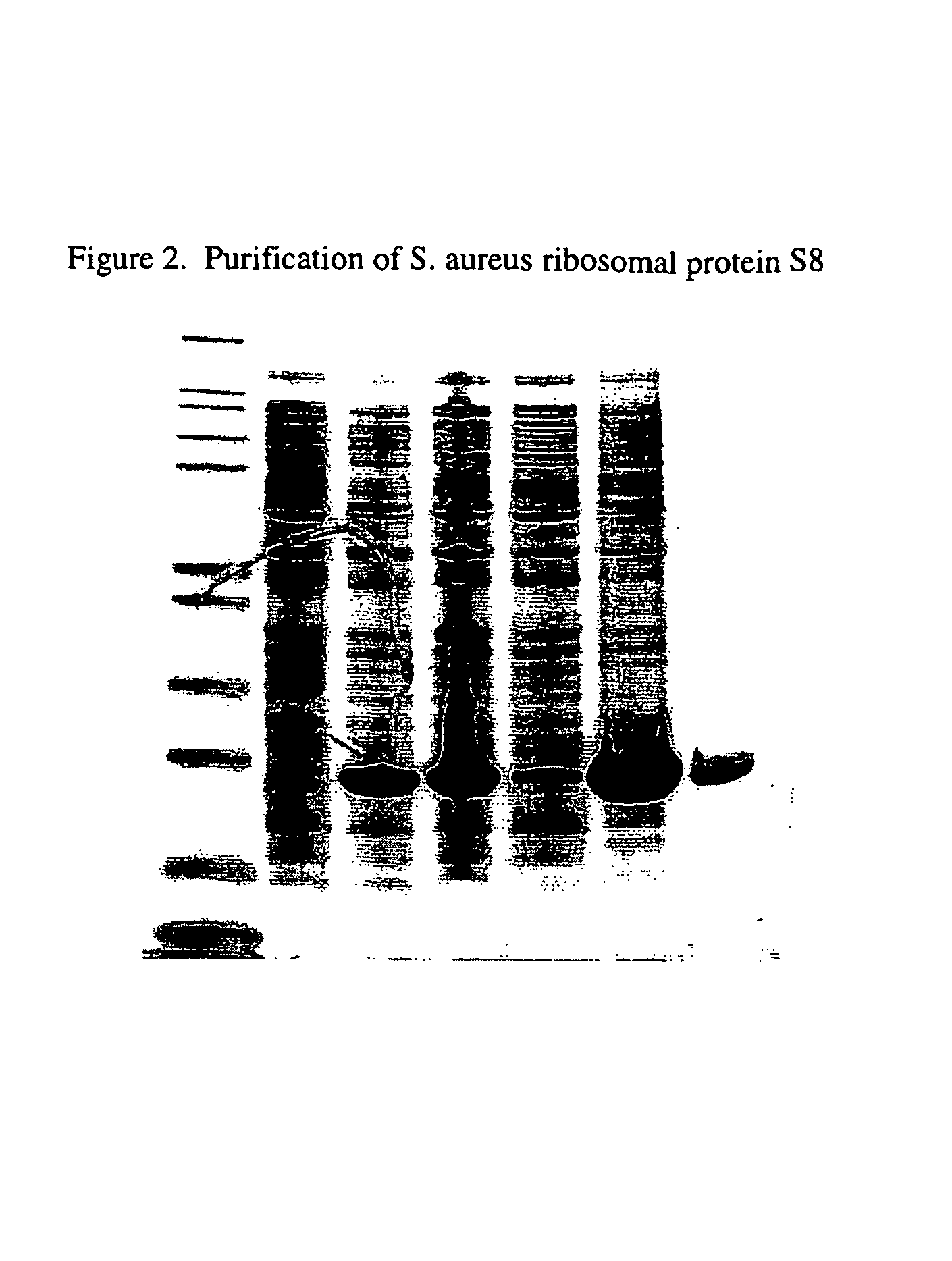S8 rRNA-binding protein from the small ribosomal subunit of Staphylococcus aureus
a small ribosomal subunit and binding protein technology, applied in the rna-binding domain field, can solve problems such as defects in the assembly of the ribosom
- Summary
- Abstract
- Description
- Claims
- Application Information
AI Technical Summary
Benefits of technology
Problems solved by technology
Method used
Image
Examples
example 1
The Expression and Purification of the S8 From Staphylococcus aureus in Escherichia coli
[0099]The gene for S. aureus S8 was PCR amplified from strain WCUH29 genomic DNA, and the resulting fragment was cloned into pET28a(+) for expression in E. coli. The S. aureus S8-expression construct (S8sa-pET28) was transformed into BL21(DE3) cells for expression and purified by cation exchange chromatography. The soluble polypeptide includes 132 amino acid residues with a molecular weight of 14,830 Da. This product was greater than 95% pure by SDS PAGE, has the desired RNA-binding activity, and N-terminal amino acid analysis confirmed its identity. A one liter culture of E. coli haboring the S8 expression construct was induced with IPTG for three hours at 37° C. FIG. 2 shows that very little of the overexpressed protein was present in the soluble fraction (lane 5). After solubilization of the protein in 6M urea and purification by anion exchange chromatography, the resulting protein appeared t...
example 2
Crystallization, Structure Determination and Refinement of the Crystal Structure of the S8 from S. aureus
2.A. Crystallization
[0102]Single crystals of native S8 grew from sitting drops prepared by mixing 2 μL protein with 2 μL of reservoir solution containing 30% PEG4000, 0.2M Li2SO4, 0.1M Tis-HCl, pH 8.5. The drops were left to equilibrate at room temperature against 500 μL of the reservoir solution. By registering the position and intensity of many tens of thousands of diffraction spots using the computer program HKL2000 (Otwinowski, Z. and Minor, W. (1996) Methods in Enzymology 276, 307-326) and, program MOSFLM (A. G. W. Leslie, MRC Laboratory of Molecular Biology, Hills Road, Cambridge, UK and Collaborative Computational Project, Number 4, (1994) Acta Cryst. D50, 760-763.) the crystal has been determined to be the orthorhombic space group P212121 and have unit cell parameters (lattice constants): a=42.1 Å, b=55.9 Å, c=61.3 Å, alpha=beta=gamma=90.0° and one molecule in the asymme...
example 3
Identifying Inhibitors of Activity of the S. aureus S8 Protein
[0106]Avi-tagged S8 was expressed in E. coli along with with BirA (biotin ligase), and LC / MS indicated that approximately 50% of the S8 contained the biotin group at the N-terminus (data not shown). RNA filter-binding studies established that the biotinylated Avi-tagged S8 protein recognized Helix 21 rRNA with an affinity comparable to the untagged protein, Table 5, indicating that the peptide tag and subsequent labeling have no adverse effect on RNA-protein recognition. This biotinylated protein was then used to develop a high throughput-screening assay, which will be used to detect inhibitors of the S8-rRNA interaction. The basis of the scintillation proximity assay is shown in FIG. 5. Essentially, the Helix 21 rRNA fragment is labeled with 33P or 3H (either internally or at the -3′ or 5′-ends), and a complex is allowed to form with the biotinylated S8 protein. After formation of the RNA-protein complex, streptavidin SP...
PUM
| Property | Measurement | Unit |
|---|---|---|
| pH | aaaaa | aaaaa |
| bond angles | aaaaa | aaaaa |
| pH | aaaaa | aaaaa |
Abstract
Description
Claims
Application Information
 Login to View More
Login to View More - R&D
- Intellectual Property
- Life Sciences
- Materials
- Tech Scout
- Unparalleled Data Quality
- Higher Quality Content
- 60% Fewer Hallucinations
Browse by: Latest US Patents, China's latest patents, Technical Efficacy Thesaurus, Application Domain, Technology Topic, Popular Technical Reports.
© 2025 PatSnap. All rights reserved.Legal|Privacy policy|Modern Slavery Act Transparency Statement|Sitemap|About US| Contact US: help@patsnap.com



